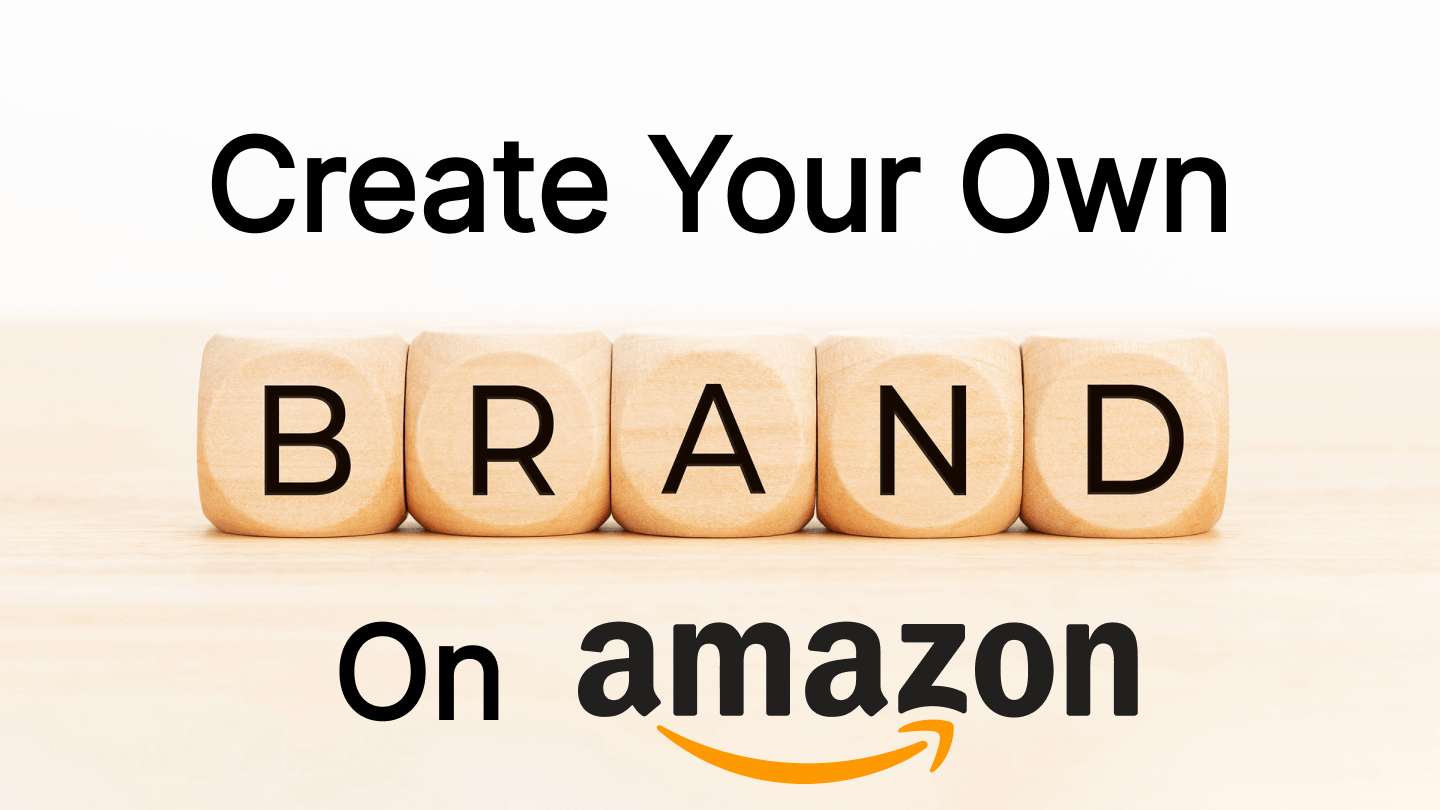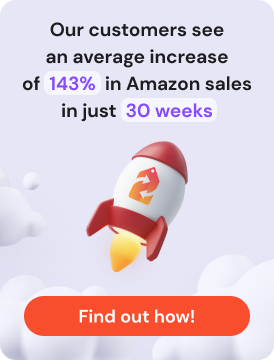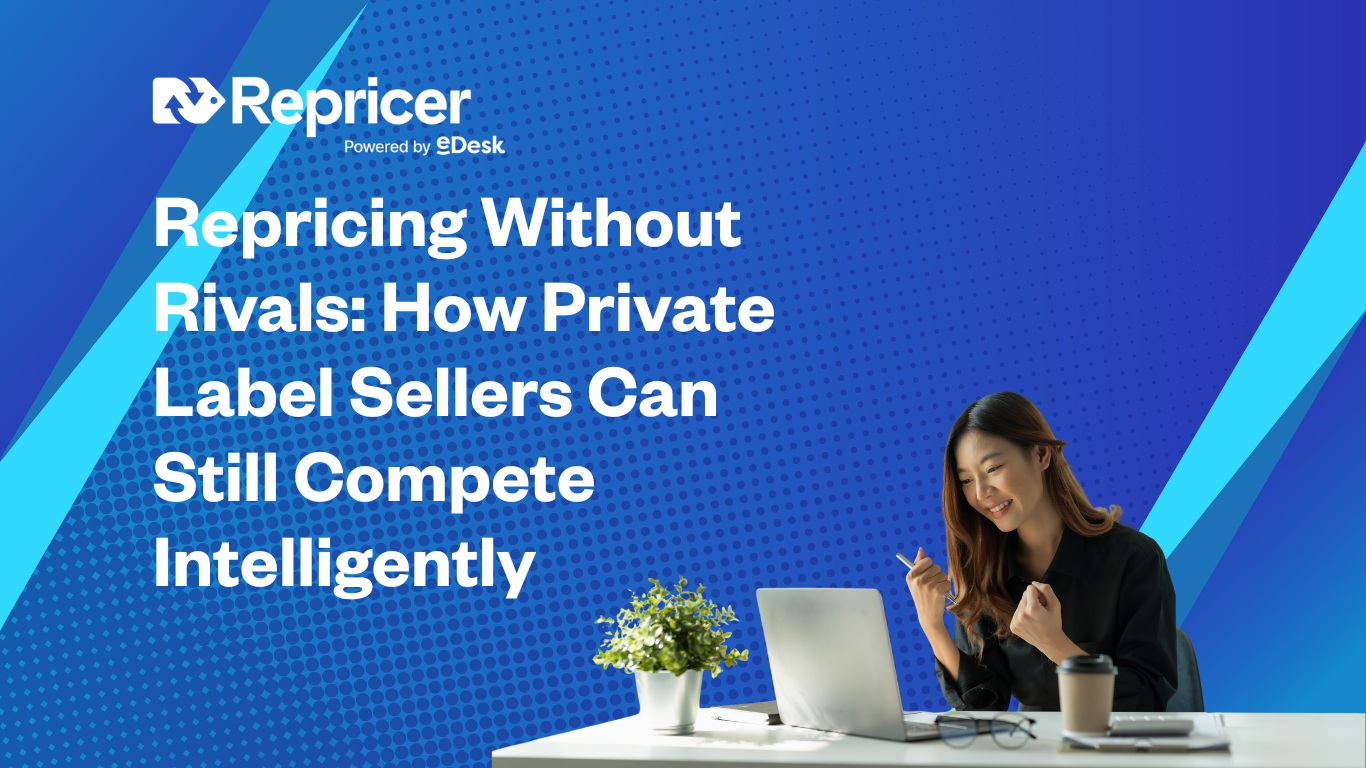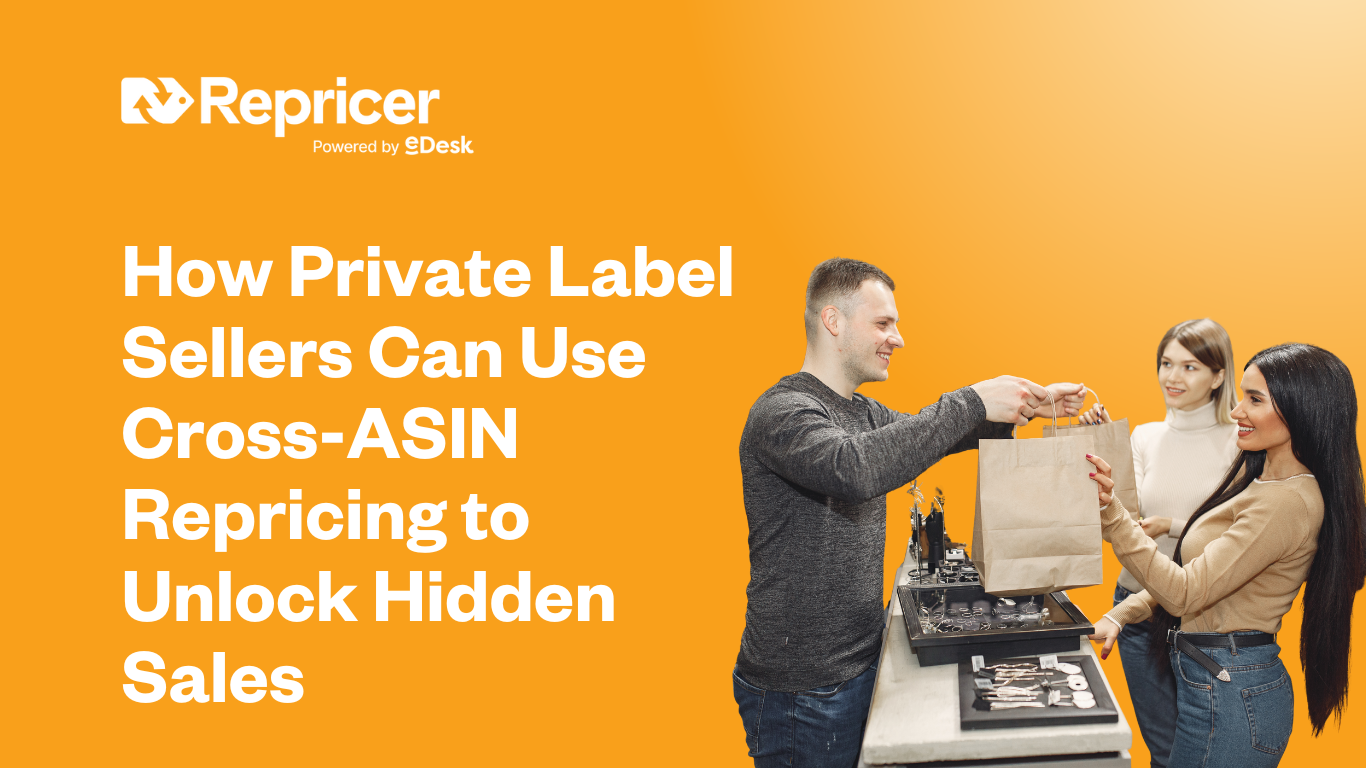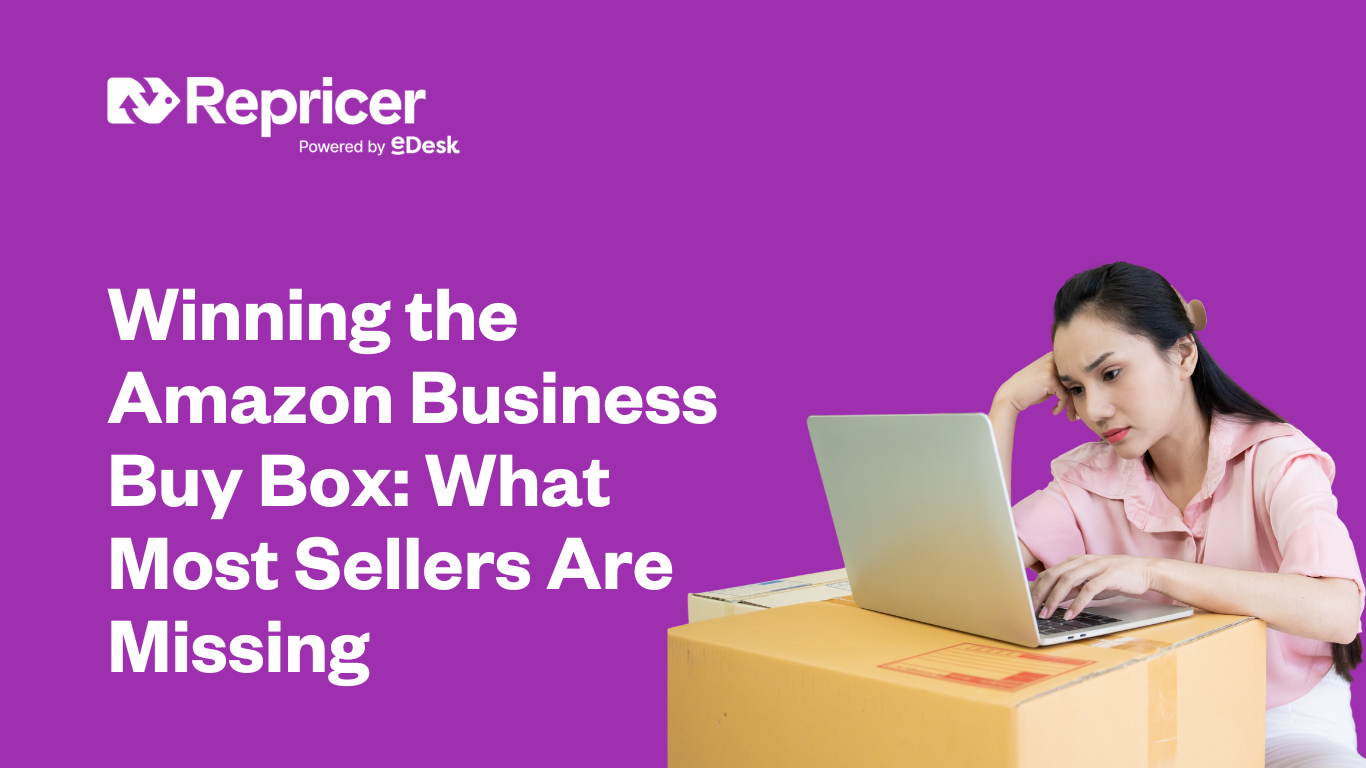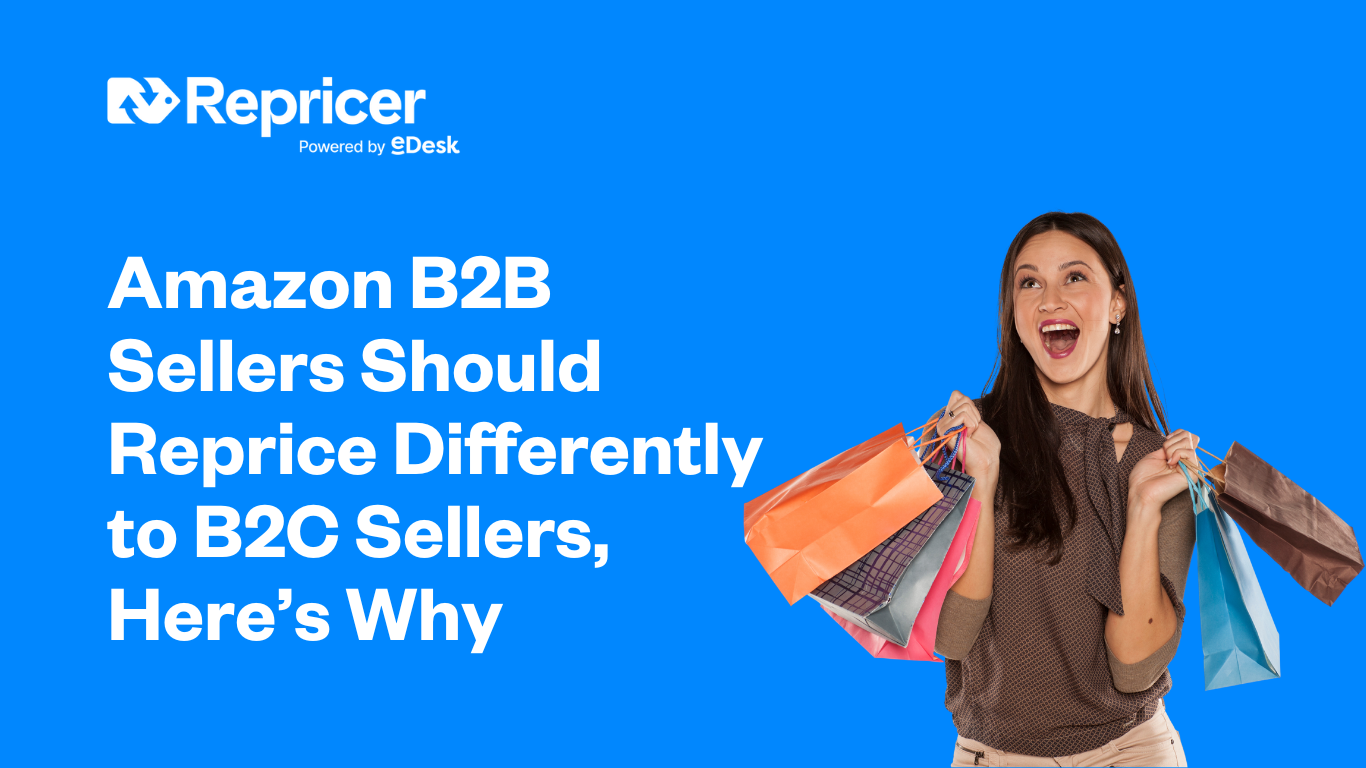¿Por qué deberías tener una marca en esta impresionante plataforma de ventas?
Hace años alguien señaló que el signo definitivo de una marca fuerte es cuando Joe Public empieza a llamar al producto por el nombre de la marca.
Piensa en Hoover. Piensa en Google.
Estas dos marcas se han convertido en sustantivos comunes: ¡incluso son verbos!
¿Qué mejor forma de ilustrar el poder de una marca que aceptarla en el lenguaje como un sustantivo? Así pues, habiendo visto la cúspide de esta pirámide de marcas, todo lo que puedas hacer para avanzar en su dirección es bueno para tu nueva marca y bueno para ti.
¿Podrías ser tú y tu marca? ¿Por dónde empezar para crear tu propia marca en Amazon?
En primer lugar, recordemos qué es una marca y hablemos de ella en el contexto del maravilloso mundo del comercio electrónico y la venta.
A continuación, veamos cómo encontrar tu mercado objetivo, cómo dar nombre a tu marca y crearla, cómo buscar proveedores para tu producto o productos de marca y cómo entrar en la gigantesca plataforma que es Amazon.
¿Qué es una marca?
Una marca puede ser una marca, una marca comercial, un nombre comercial, un estilo o, como hemos visto antes, un producto o tipo de producto concreto.
Esa es la esencia funcional. Pero, ¿qué puede significar para ti y para tu cliente tener una marca?
Qué puede significar para ti tener una marca
Tener una marca puede ayudarte a centrarte en cuál es realmente tu propuesta de venta.
Una marca puede ayudarte a articular las ventajas de tu producto. No se trata sólo de palabras descriptivas, sino de cómo presentas tu marca y sus productos al mundo exterior.
Puede ser cualquier cosa, desde el tono de voz y el estilo hasta la confianza, la calidad y la reputación.
Quieres estar en una posición como vendedor en la que a la gente le guste tu marca, la conozca, sepa lo que representa y la busque.
La recompensa de tener tu propia marca de éxito son, por supuesto, los ingresos y dirigir un negocio de éxito, pero va más allá.
Cuando creas tu propia marca en Amazon, y optimizas su éxito, esto puede ayudarte a destacar entre la competencia.
Tu propia marca puede darte una propuesta de venta única y, lo que es más importante, longevidad y credibilidad en el mercado.
Qué puede significar para tu cliente tener una marca
Un cliente que se encuentra con tu marca y la recuerda o incluso la compra, si lo has presentado todo bien, apreciará y recordará su calidad y volverá a ella cuando necesite comprar de nuevo.
Un cliente satisfecho con tu marca puede fidelizarse a ella, y esto te coloca en una fuerte posición de reventa.
¿Qué productos puedes o debes vender con tu marca en Amazon?
Aquí el mundo es tu ostra.
No tienes necesariamente que conceptualizar y crear tu propio producto. Hay millones de grandes productos ahí fuera que ya existen. Lo único que tienes que hacer es encontrarlos.
No importa que otra persona ya haya tenido la idea de un buen producto. Si es un producto disponible al por mayor que puedes comprar al por mayor, puedes adquirirlo y hacerlo tuyo, con tu propia marca.
Esto se llama «etiquetado privado«. También se suele llamar «marca blanca». Piensa que se trata literalmente de poner tu marca en el producto al por mayor de otra persona, con su permiso, y llamarlo -y venderlo- como si fuera tuyo.
Veamos algunas de las ventajas de utilizar productos de marca blanca antes de analizar cómo crear tu marca, buscar proveedores y poner tu producto de marca en Amazon, el mercato por excelencia.
Ventajas de vender tus propios productos de marca en Amazon
Amazon es un mercato muy concurrido y competitivo.
Ya hemos hablado de esto antes, pero tener una marca puede ayudarte a destacar entre la competencia. En realidad, si haces bien tu marca, no sólo te estás diferenciando de la competencia, sino que la estás superando, y los clientes compran tu producto en lugar de los de tus competidores.
Una vez que estés vendiendo, ¡las gallinas volverán a casa!
He aquí algunas de esas ventajas:
1. Puedes retener a los clientes
Una vez que hayan comprado tu producto, hayan disfrutado de él y de tu servicio de atención al cliente, tus clientes recordarán tu marca y volverán cuando necesiten el producto de nuevo.
Un efecto secundario de esto también puede ser que los clientes satisfechos se conviertan en defensores de tu marca, recomendándola a sus amigos y dejando buenas críticas en Amazon y en las redes sociales. Esto puede impulsar más ventas a nuevos clientes. Es un gran lugar para estar como empresa.
Lo que también acompaña a las ventas repetidas es la fidelidad a la marca. Cuando llega el momento y lanzas un nuevo producto en tu cartera, ya tienes un público que ha fichado tu marca como buena, y es probable que prueben tu nuevo producto.
2. Puedes hacer crecer tu negocio más fácilmente
Lo bueno de crear tu propia marca en Amazon es que no tienes que reinventar la rueda cada vez que lanzas un nuevo producto. Ya has hecho el trabajo duro con tu producto original. Tu base de clientes existente ya está familiarizada con tu marca y la calidad de sus productos, por lo que lanzar un nuevo producto y hacer crecer tu negocio puede ser mucho más fácil.
3. Estás preparado para durar
Ya hemos mencionado la longevidad, pero merece la pena mencionarla de nuevo, ya que es una gran ventaja de vender con tu propia marca en Amazon.
Imagínate que tuvieras que volver a empezar cada vez que presentas un nuevo producto. Sería ineficaz, estresante y, francamente, una pesadilla.
Cuando creas tu propia marca y la estableces, no sólo entablas relaciones con los clientes, sino que alimentas las relaciones con las personas que trabajan contigo para llevar tu producto al mercado.
Estamos hablando de tu fabricante o proveedor, la empresa de envasado que utilizas y el agente de cumplimiento. Todas estas partes habrán visto que tu negocio está en marcha y funcionando y les resultará fácil adaptarse a ayudarte con tus nuevos productos. No tendrás que convencerles desde el principio para que crean en ti y en tu negocio cada vez que quieras lanzar un nuevo producto.
Verás que antes mencionamos el cumplimiento. Tu agente de cumplimiento bien podría ser el propio Amazon, si utilizas su servicio de Cumplimiento por Amazon (FBA).
Ahora hay un socio, si no lo conoces ya, con el que querrás tener una relación sólida. A continuación hablamos un poco más de Amazon.
Hasta aquí todo bien. Hemos considerado lo que es una marca y lo que puede significar para ti y para tu cliente, e incluso hemos echado un vistazo a algunas de las principales ventajas de vender con tu propia marca.
El siguiente paso es pensar en tu público objetivo. Es hora de ponerse la gorra de pensar.
¿A quién quieres dirigirte?
Es una decisión importante que debes tomar. Si no te orientas bien, puedes desperdiciar mucho esfuerzo, tiempo y dinero.
El quid de la cuestión aquí es decidir a quién quieres vender.
Tienes que identificar al tipo de persona que, en un mundo ideal, querrá comprar tu producto. No tiene sentido intentar vender algo a alguien que no está interesado.
He aquí un ejemplo. Si decides intentar vender una limpiadora de alfombras delicadas de primera calidad, querrás atraer a personas que tengan alfombras que les importen y en las que estén dispuestas a gastar dinero. Estas personas son exigentes y están dispuestas a pagar más por la calidad. Por tanto,
- Empieza a pensar en su idioma.
- Empieza a pensar en sus alfombras y en lo que quieren para ellas.
- Empieza a pensar en lo que tu marca debería decir a esas personas.
Cuando tengas una idea de tu público objetivo, es hora de que seas creativo y definas tu marca y le des un nombre.
Crea tu propia marca en Amazon
Debes elegir algo que sea memorable, que cause impresión y que aluda a lo que es el producto o la marca y a lo que puede hacer por el cliente.
Necesitarás un nombre, un eslogan y un logotipo.
Ten en cuenta que aquí no dependemos únicamente de las palabras. Tu marca puede causar una gran impresión visual. Muchas marcas, por ejemplo, utilizan colores o imágenes para «hablar» con el cliente.
Por ejemplo, algunas marcas utilizan imágenes verdes o de la naturaleza para dar a entender algo benigno, natural y bueno.
Después de pensar detenidamente en tu nueva marca e imaginarte poniéndola delante de tu público objetivo, mira a ver si se te ocurre un nombre, un eslogan y un logotipo. Si no eres capaz de idearlos por ti mismo, siempre puedes recurrir a un profesional que te ayude. Hay muchos buenos creativos autónomos en Internet, como diseñadores de logotipos y redactores publicitarios, que pueden crear tu marca por ti. Considera la posibilidad de encontrarlos en sitios como Upwork, Fivver o 99designs.
Cuando tengas tu marca, es hora de encontrar tu producto de marca blanca.
Cómo encontrar tu producto de marca blanca
Lo más probable es que ya hayas decidido cómo quieres que sea tu producto. Lo hayas decidido o no, tendrás que encontrar al fabricante o proveedor adecuado para ti. Algunas personas buscan posibles productos mirando en el propio sitio web de Amazon. También hay varias herramientas, como ZonGuru, que puedes utilizar para estudiar qué se vende en Amazon y por qué.
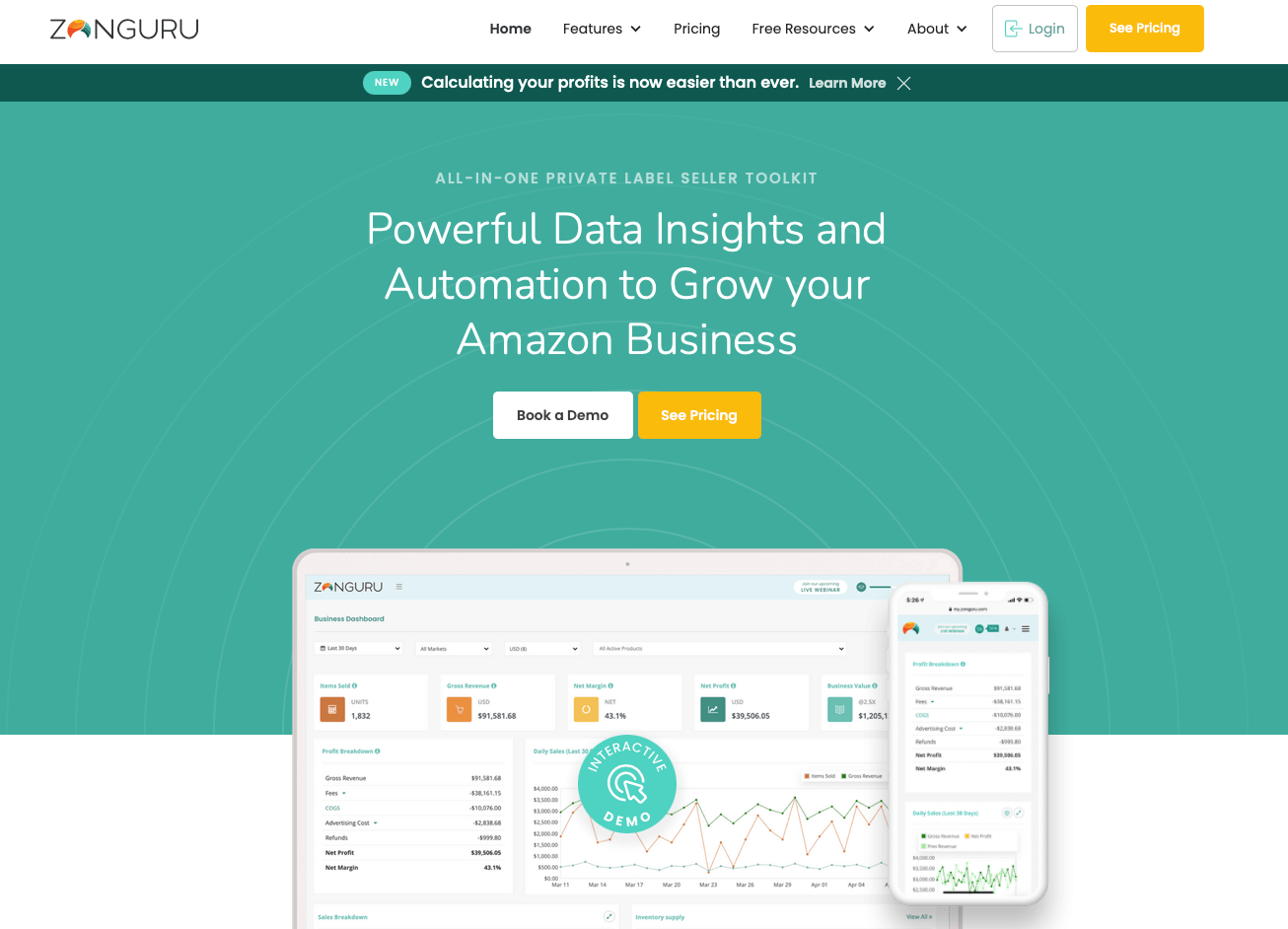
6 consejos rápidos para buscar un producto en Amazon
1. Estudia las comisiones de Amazon para que puedas tenerlas en cuenta al proyectar las ventas y los costes.
2. Busca productos muy demandados que tengan poca competencia.
3. Considera los productos que son buenos para las ventas repetidas.
4. Desconfía de los productos de moda o de temporada.
5. Los productos de gama alta con un buen embalaje suelen tener menos competidores.
6. Evita enfrentarte a grandes actores con bolsillos más profundos en tu espacio de producto.
Una vez que tengas una idea para tu producto, querrás encontrar al proveedor o fabricante mayorista.
Mucha gente utiliza la popularísima Alibaba, que cubre principalmente a fabricantes chinos. Otras alternativas son AliExpress, DHgate, eWorldTrade e Indiamart. Hay muchas más.
Una vez que hayas encontrado tu producto, puedes optar por hacer una pausa para asegurarte de que tienes un sitio web, un correo electrónico y una dirección comercial antes de ponerte en contacto con el fabricante o el proveedor. Esto puede dar una mejor impresión que ser una persona solitaria mirando a su alrededor. Es más probable que un fabricante te tome en serio si demuestras que vas en serio y eres un actor serio.
Sea cual sea el fabricante o proveedor que elijas, es una buena preparación tener preparadas algunas notas o una lista de preguntas. Podrías incluso crear una plantilla de copia y pega de las mismas para facilitar su uso cuando te pongas en contacto con varios proveedores.
Algunas preguntas que debes plantearte a los fabricantes
- ¿Es una empresa comercial o un fabricante? Si es lo primero, es probable que estés hablando con un «intermediario», y quizá merezca la pena intentar encontrar a un fabricante.
- ¿Cuántos empleados tienen en la fábrica?
- ¿Dónde están? Es bueno saber si están bien conectados en lo que se refiere a transporte y envío.
- ¿Con qué países hacen ya negocios?
- ¿Suministran alguna marca? Si es así, pide ejemplos.
- ¿Han suministrado antes productos destinados a Amazon?
Añade a esta lista las preguntas que se te ocurran.
¿Y ahora qué?
Cuando tengas tu marca, hayas identificado tu producto y hayas hecho algunas sumas iniciales para comprobar la viabilidad, es hora de ponerte en marcha con Amazon. Te darás cuenta de que hay mucho que aprender y hacer, pero no te preocupes, ya que Amazon da una gran bienvenida a los nuevos vendedores y les enseña cómo vender en el mercato favorito del mundo.
Aquí tienes una visión de alto nivel de los próximos pasos que debes dar.
Paso 1
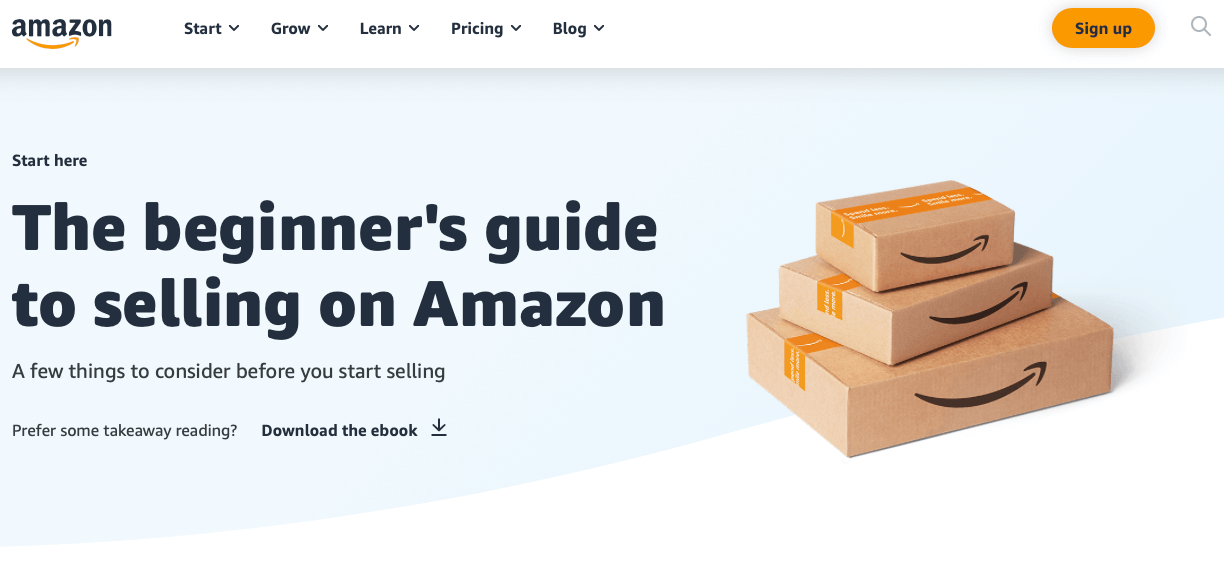
Crea una cuenta profesional de Amazon que te dará acceso a Amazon Seller Central.
Paso 2
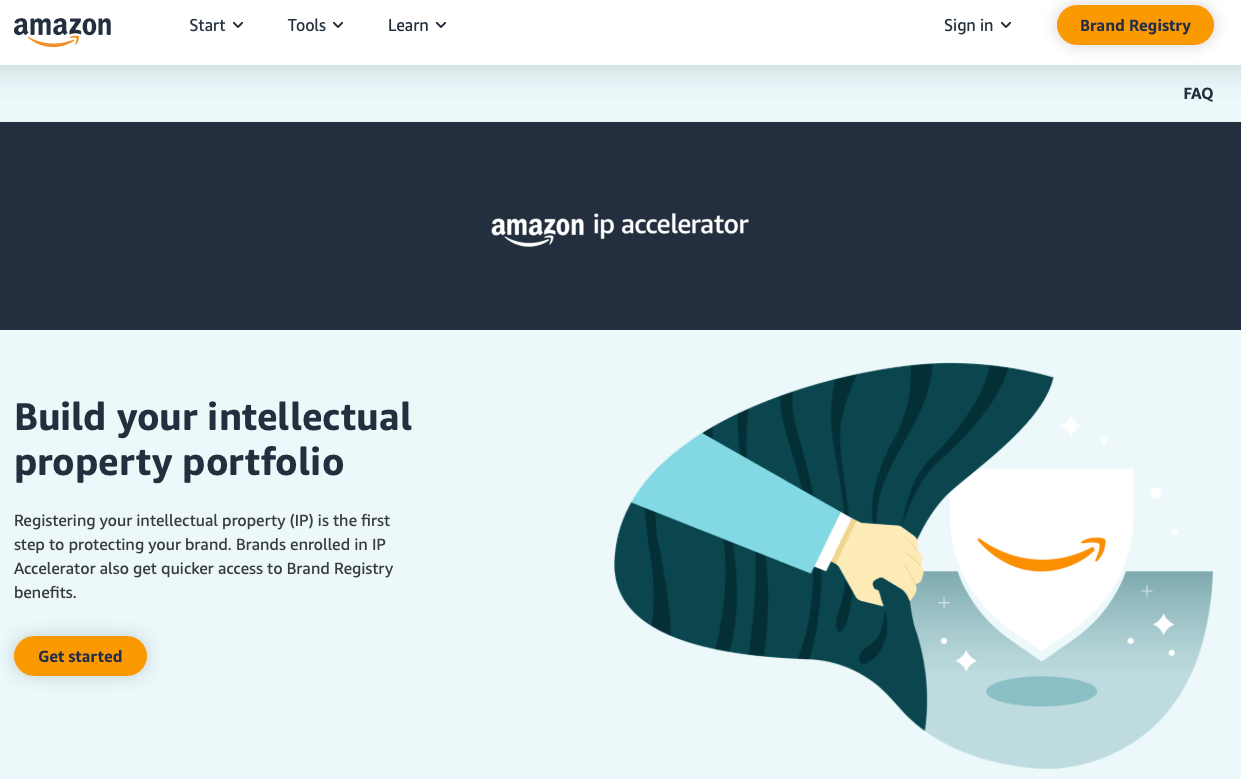
Registra tu propiedad intelectual para ayudar a proteger tu marca utilizando Amazon IP Accelerator.
Paso 3
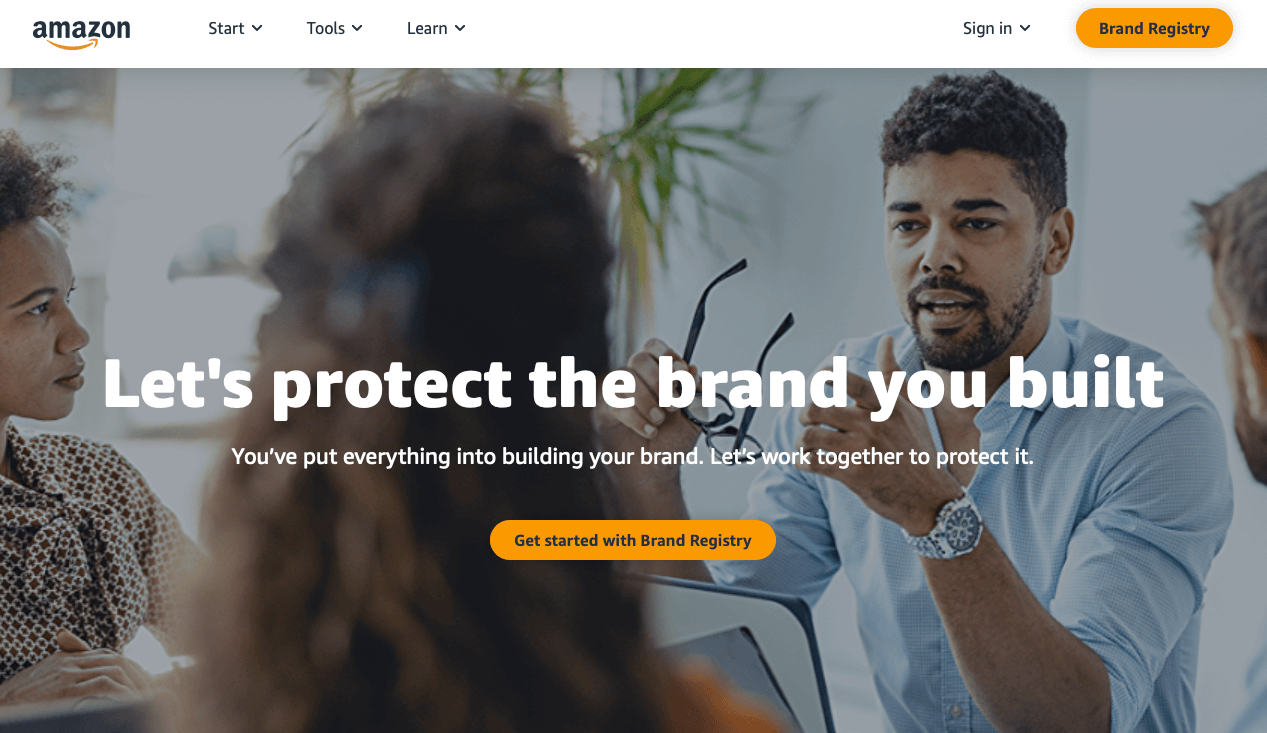
Inscríbete en el Registro de Marcas de Amazon.
Paso 4
Una vez que el Registro de Marcas de Amazon haya aprobado tu marca, obtendrás acceso a herramientas y recursos que te ayudarán a gestionar tus productos y a crear y mantener tu marca en Amazon.
Tres de las principales características que obtendrás son:
- La herramienta Contenido A+: una gran oportunidad para mostrar tu producto.
- Una tienda Amazon: varias páginas para mostrar tus productos y tu marca.
Acceso a la funcionalidad de Marcas Patrocinadas: publicidad en Amazon por la que pagas.
Paso 5
Una vez que te hayas establecido y tengas tu marca en marcha en Amazon, hay programas de Amazon que puedes considerar utilizar para ayudar a impulsar tu marca y sus ventas. Puedes encontrarlos en Seller Central.
Ahora, ¡es el momento de poner en marcha tu nuevo negocio y crear tu propia marca en Amazon!
